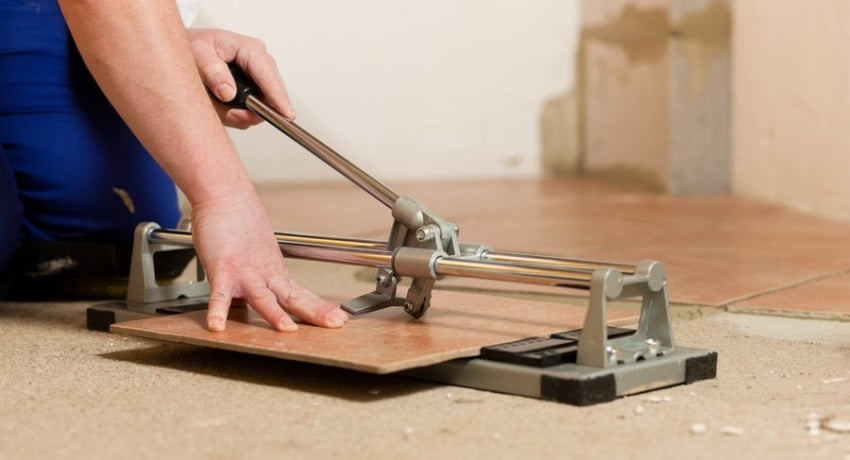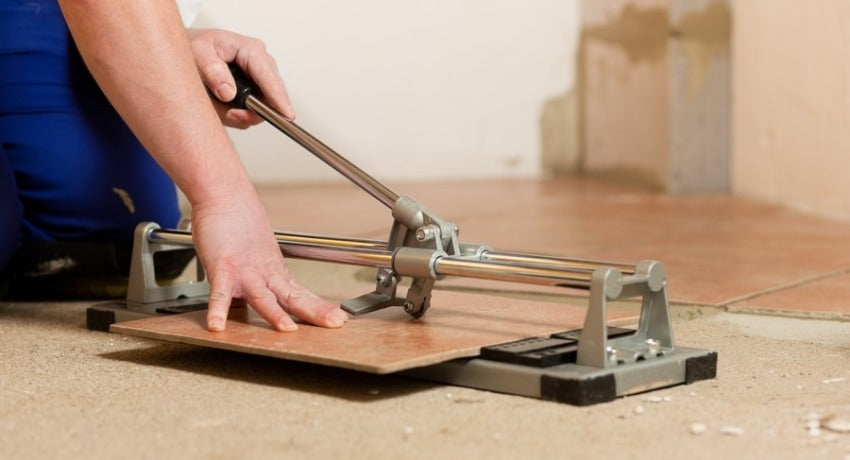
What everyone needs to know about silica dust?
Silica powder comes from crystalline quartz or non-crystalline items; Sand and quartz are the most common forms and are dangerous for anyone who regularly breathes the dust. Those most affected are those who extract the materials, construction workers and farmers. Anyone who continually breathes in silica dust will experience respiratory problems that can eventually turn into silicosis, which is a serious disease that can scar the lungs.
Most of the time, silica is not harmful to people unless it is disturbed and dust is created. The most common ways to disturb silica are by cutting, chipping, drilling, grinding, or blasting silica-containing materials. Unfortunately, there are many materials used during construction that contain silica and include the following:
- Tiles
- Plaster
- Asphalt
- Cement
- Bricks
- Grout
- Plaster wall
- Concrete
- Mortar
- Rocks
- Tiles and flooring
- Sand
- Stones
- Plastering
- Terrace
- Ground
It never takes that much silica dust to create a hazardous environment, and OSHA currently has established requirements for the allowable exposure level at or below 50 µg/m 3 . This level of exposure is measured over an eight-hour day, meaning employers have had to utilize engineering controls to limit an employee's exposure. This means that every employer needs to have a written exposure control plan and train each of their employees on the risks of silica dust and what the requirements are to prevent them from becoming overexposed.
- Silica Exposure Standards: OSHA has established requirements to limit exposure to silica dust to a level of 50 µg/m3 or less during an eight-hour workday to protect the health of workers from the risks associated with silica crystal clear.
- Engineering Controls: Employers are required to implement engineering controls to limit employee exposure to silica dust, which includes developing a written exposure control plan and training workers about silica hazards and requirements. to prevent overexposure.
- Personal Protective Equipment (PPE): All workers who are exposed to silica dust must use appropriate personal protective equipment to prevent inhalation of the dust, such as respiratory masks and protective glasses.
- Air Quality Monitoring: Continuous monitoring of air quality is essential to assess silica levels in the workplace. Air samples are collected using battery-powered vacuum cleaners, allowing immediate measurement of silica dust exposure levels.
- Health Risks: Studies indicate that exposure to silica dust during activities such as cutting pavers can result in the release of large amounts of silica into the air, posing a serious health risk to exposed workers.
- Impact on Respiratory Health: Inhaling silica dust can cause serious respiratory illnesses such as silicosis, lung cancer and other lung diseases, highlighting the importance of effective preventative measures.
- Need for Awareness: It is crucial to raise awareness among workers about the dangers of silica dust and the importance of following workplace safety practices to avoid excessive exposure.
- Regulation and Enforcement: OSHA regulations on exposure to silica dust are intended to ensure that employers meet established safety standards and protect the health and well-being of their workers.
- Employers' Responsibility: Employers have a responsibility to provide a safe and healthy work environment by implementing exposure control measures and ensuring that workers receive adequate training about the risks associated with silica dust.
- Importance of Prevention: Preventing exposure to silica dust is essential to protect the health of workers and avoid the serious impacts of respiratory diseases related to crystalline silica.
Anyone working near silica dust must wear appropriate equipment to avoid inhaling the dust. Unfortunately, there is nothing considered safe for silica dust, which is why air monitoring needs to be done continuously when a person believes they will be exposed to it.
A battery-powered vacuum can be worn around a person's neck to collect samples of the air where the person is working.
See how to take care of silica dust
- Use of Protective Equipment: It is essential that anyone working near silica dust uses appropriate protective equipment to avoid inhaling the dust, given its harmful nature to respiratory health.
- Continuous Air Monitoring: Due to the lack of safe levels of exposure to silica dust, it is necessary to carry out continuous air monitoring whenever exposure is suspected, thus ensuring the protection of workers.
- Air Sample Collection: To assess silica levels in the workplace, a battery-powered vacuum cleaner can be used to collect air samples from the collar of the person working, allowing an immediate assessment of air quality.
- Immediate Information: Air quality monitoring results are presented immediately, providing accurate information about the levels of silica dust present in the workplace and allowing additional protective measures to be taken if necessary.
- Impact on Nearby Workers: Studies indicate that activities such as cutting pavers can result in the release of large amounts of silica into the air, affecting not only the workers directly involved, but also anyone in the vicinity of the work area.
- Risk Awareness: It is important that workers are aware of the risks associated with exposure to silica dust and the safety measures necessary to protect their respiratory health.
- Potentially Hazardous Levels: The significant amount of silica dust released during certain activities, such as paver cutting, highlights the severity of the problem and the need for adequate precautions to avoid excessive exposure.
- Collective Protection Measures: In addition to the use of individual PPE, it is essential to implement collective protection measures, such as adequate ventilation and dust control, to reduce the dispersion of silica dust in the work environment.
- Consequences of Exposure: Prolonged exposure to silica dust can lead to serious respiratory illnesses, emphasizing the importance of preventive measures and strict compliance with occupational safety regulations.
- Employers' Responsibility: Employers have a responsibility to ensure a safe working environment by adopting appropriate monitoring, control and prevention practices to protect the health and well-being of their workers.
There are new power tools hitting the market that claim to collect silica dust and any other harmful dust particles while cutting. These power tools can work on concrete, landscaping, tile, and masonry, and although they are new, they show promise.
Limiting Exposure to Silica Dust
For many workers, especially those in sectors such as construction, mining and manufacturing, exposure to silica dust is a constant reality. However, there are measures that can be adopted to limit this exposure, such as controlling the time spent in environments where this material is present and ensuring periods of rest in places with clean air.
Impact on Respiratory Health
Even in small doses, inhaling silica dust can have serious consequences for workers' respiratory health. In addition to silicosis, a fatal condition, other diseases such as lung cancer, tuberculosis and COPD are associated with prolonged exposure to this material, highlighting the seriousness of the problem.
Forms of Silicosis and Progression of Symptoms
Silicosis, a lung disease caused by the inhalation of silica particles, can manifest itself in different ways and with different progression rates. Simple chronic silicosis results from prolonged exposure to small amounts of silica dust, while accelerated and acute silicosis are associated with more intense exposures over shorter periods of time. Symptoms, which include shortness of breath and lung inflammation, can progress quickly, especially in cases of acute exposure.
Technology and Security Guidelines
To protect workers from exposure to silica dust, it is essential to adopt modern technologies and follow the latest guidelines, such as those established by OSHA. This involves using appropriate protective equipment, continuously monitoring air quality and implementing dust control measures in the workplace.
Technological Conclusion
By utilizing advanced technological approaches and following the latest safety guidelines, it is possible to significantly reduce the risk of exposure to silica dust and protect workers' respiratory health. Investing in preventative measures and compliance with regulations is essential to ensure a safe and healthy work environment.
Hopefully, in the future, no one will need to worry about silica dust or its health effects.

